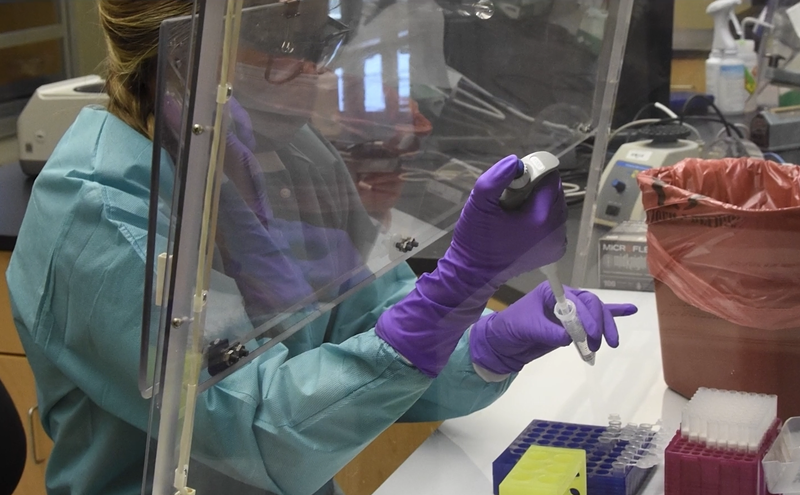Original post: The first avalanche death in Colorado circa 2018 took place on Sunday, January 21, during a weekend that saw the most significant winter storm of the season in a relatively snow-starved period hit large sections of Colorado. The incident, which took place between Red Mountain Pass and the Town of Silverton in an area known to locals as Sam's Trees, serves as a tragic reminder about the importance of safety, as spelled out in ten tips from the Colorado Avalanche Information Center about how to avoid being killed in such a slide.
First official word about the accident came from CAIC, which issued a one-sentence synopsis of the accident covering the information shared above and promised a more detailed report later this week.
Also weighing in was the San Miguel County Search and Rescue, whose news release points out that "the Northern San Juans have seen up to 20 inches of new snow in a 24-hour period.... Please remain vigilant while traveling in the backcountry."
The identity of the victim has not yet been made public pending next-of-kin notification.
The appeal of Sam's Trees for backcountry skiers is made clear in the following video.
The North American Avalanche Danger Scale used by the CAIC lists five levels of danger. At present, the mountains that include Sam's Trees are ranked in the third slot, labeled "Considerable." It's described like so:
Travel AdviceLast March, during a period of even higher avalanche danger, we reached out to Scott Toepfer, a veteran mountain weather and avalanche forecaster with the CAIC. Below, read ten safety tips for those who venture into the snowy Colorado outdoors at this time of year.
Dangerous avalanche conditions. Careful snowpack evaluation, cautious route-finding and conservative decision-making essential.
Likelihood of Avalanches
Natural avalanches possible; human triggered avalanches likely.
Avalanche size and distribution
Small avalanches in many areas; or large avalanches in specific areas; or very large avalanches in isolated areas.
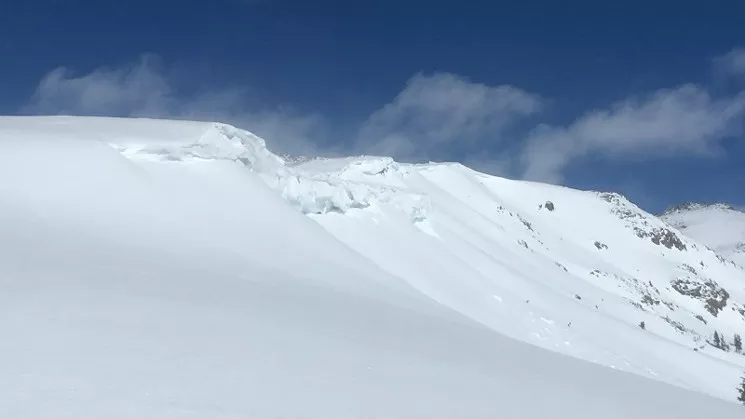
The location of a March 8, 2017, slide in the Independence Pass area.
Courtesy of the Colorado Avalanche Information Center
"This is one of the common mistakes people make this time of year — and it's a big one, especially for people who live along the Front Range urban corridor. It's 60 or 70 degrees, it's March, the days are getting longer, the grass is starting to turn green, and you're starting to think about spring activities. But above 10,000 feet, it's still winter. You may feel the winter avalanche problems are gone, but the snowpack doesn't necessarily see it that way.
"Our typical avalanche problems are with slab avalanches and persistent slab avalanches, which develop from weak snow layers. Once they get buried, they remain weak. So it may feel like summer in Breckenridge when you're going out to lunch, but above 10,000 feet, it's winter — no ifs, ands or buts — and we're still dealing with winter avalanche problems."
2. Beware of the blue-sky syndrome.
"We may have a storm raging through the mountains in the morning, but after the storm clears out, we'll start to see some beautiful blue-sky days — and that does some odd things to people's thought process. They'll think, 'It's an incredibly beautiful day. We've got some fresh snow. Let's go ride!' And they ignore the storm that just blew through and developed fresh avalanches that are just sitting there, waiting for a trigger. It's that blue-sky syndrome, and it can really cause us to lose touch with the snow we're standing on."
3. Looking at a weather forecast before heading out isn't enough.
"People need to get into the habit of monitoring our Colorado Avalanche Information Center website, because we look at observations and forecasts and danger ratings and trends. We can put together a much clearer picture of what's going on. We let you know where avalanches are happening and if the weather forecast is going to increase or decrease the risk, or hold steady with the current set of avalanche risks and problems. I like to think of the website as a Grand Central station for incoming data: a great place to start."
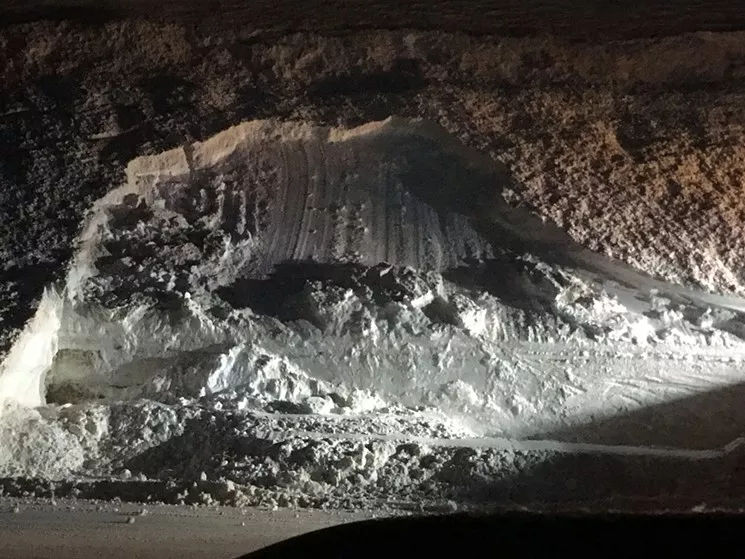
A look at a March 7, 2017, avalanche in the vicinity of Berthoud Pass.
Courtesy of the Colorado Avalanche Information Center
"You need to evaluate the terrain — be able to look and say, 'Hey, that looks like a place that might be a little more risky, but over on this side of the bowl, I might still get good value and I'll be safer.' When you're at the top of a pass, think about, 'If an avalanche goes, where is it going to end up?' And as part of that process, you're going to want to communicate with your partner or partners about how you plan to descend or, in the case of a snowmobile group, how you plan to ascend. You want to pre-think out safe places where you can either hide or stop, and then watch your next partner go."
5. Keep your partners in view.
"This can be tricky, especially on days when the visibility is nil. I hear people toss around the idea of, 'I'm not going to be able to see you for very long, so I'm going to count to twenty and then I'll take off.' That might be great in theory, but what happens if your friend skies down for ten seconds, gets out of sight, and then goes butt over tea kettle and loses a ski — and then you leave ten seconds later and trigger an avalanche on top of him? I think it's important to keep eyes on your partner all the time, because too many things can go wrong and then get worse — that cascading effect. If something starts to go south, you can often get into a really bad situation really fast. That's why I don't like pushing the envelope too much. The consequences of bad decisions can be very dramatic for people."
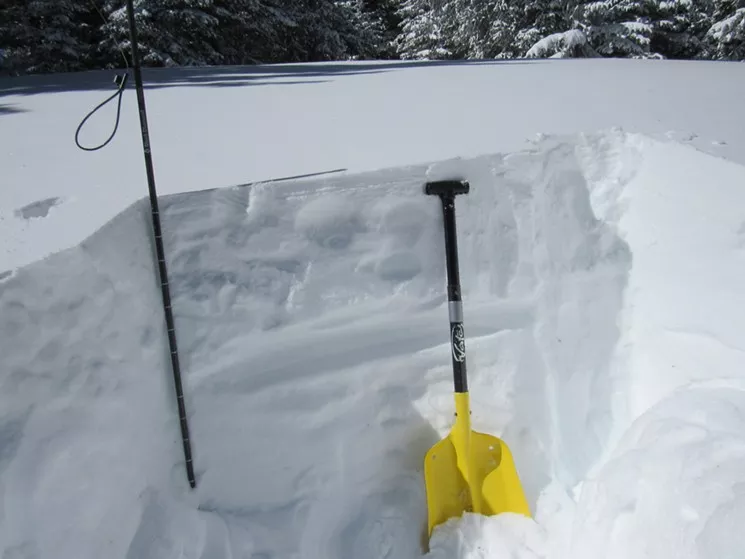
Shovels provide scale in the aftermath of a March 7, 2017, avalanche in the Vail and Summit counties zone.
Courtesy of the Colorado Avalanche Information Center
"The bare-bones basics are a beacon, a probe and a shovel, because you have to be able to find your partners buried in avalanche debris and dig them out — and that has to happen very fast. You should also carry a first-aid kit and a repair kit, and enough extra clothes. If you do get involved with an avalanche and someone separates a shoulder or breaks a wrist, it's going to be a pretty hideously long wait for help, and it's going to be cold. Misery may be the least of your issues; you might be looking at exposure and a lot of other things. So you should be prepared to take care of yourself if something goes wrong. Rescue teams are great, but remember that their ability to get to you may be compromised by the weather and avalanche conditions. Even if you have cell-phone service, people may not be able to get to you. You have to be self-reliant, and that gear — tools and backup warmth — are pretty much essential."
7. If you can afford it, consider investing in extra safety gear — but know that it has limitations, too.
"Batteries can wear down really fast on a cell phone even if you have good connectivity — and a lot of times, you won't. There are ways that search-and-rescue teams and sheriffs departments can track your phone, but once your battery is gone, it's gone. That's why a lot of people use the InReach or SPOT satellite-messenger units that are monitored all over the U.S.; if someone hits the SOS button, the company that monitors them knows through GPS where the button got pushed.
"Another thing we're finding that may be really valuable but tends to be a little more expensive than some people are willing to justify are avalanche airbags or balloon bags. Some run off compressed air cartridges, some run off lithium batteries and use very strong fans, and they have a rip cord, kind of like a parachute. The way they work is, in an avalanche, the little bits of snow settle toward the bottom and the bigger blocks get floated up to the surface — and when the airbag is inflated, you're one of the bigger blocks. So in theory, you should end up near or at the surface.
"But none of these things is foolproof. People die in avalanches with airbags as well as survive, and the SPOT units aren't 100 percent, and can give you a false sense of security. The most valuable thing you take into the backcountry, outside of your very good friends and their skill set, is that incredible computer that sits on top of your shoulders. You just have to remember to turn it on and log in."
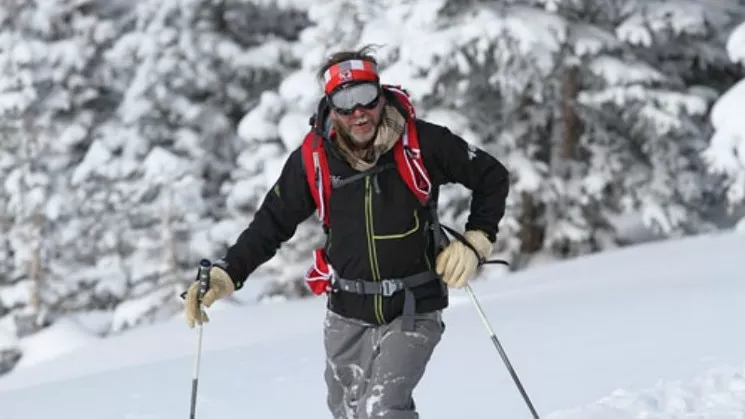
Scott Toepfer of the Colorado Avalanche Information Center.
Courtesy of the Colorado Avalanche Information Center
"It's really important that you take a good avalanche class that will give you a sound foundation to take into the backcountry. There's a group called AIARE (the American Institute for Avalanche Research and Education) that offers some good ones. And just because you've taken one before doesn't mean you shouldn't take another one. I've been forecasting and mitigating avalanches for forty years-plus, and I'm learning new stuff all the time."
9. Veto power can be better than democracy in the high country.
"Everyone in your group should discuss what you're doing and come to a decision. But the people I ski with, if anybody in the group says, 'This doesn't look good,' we without question all back away. That makes it totally non-democratic; if six say yes and one says no, you don't go. Maybe that person is picking up on something the rest of us haven't, for whatever reason."
10. There's always risk involved.
"The danger may be decreasing in an area, but the only time it goes to zero is when the snow is melted and gone. There's always some residual risk. That's the nature of avalanches."
For more information, visit the Colorado Avalanche Information Center website.





